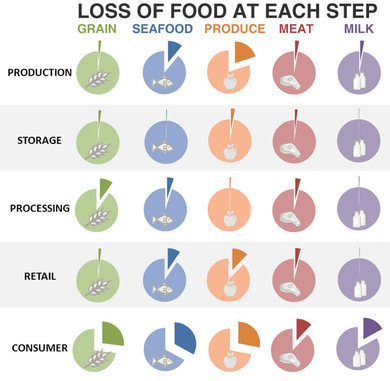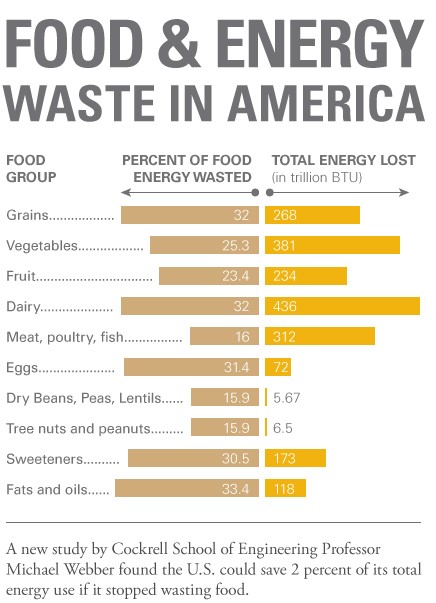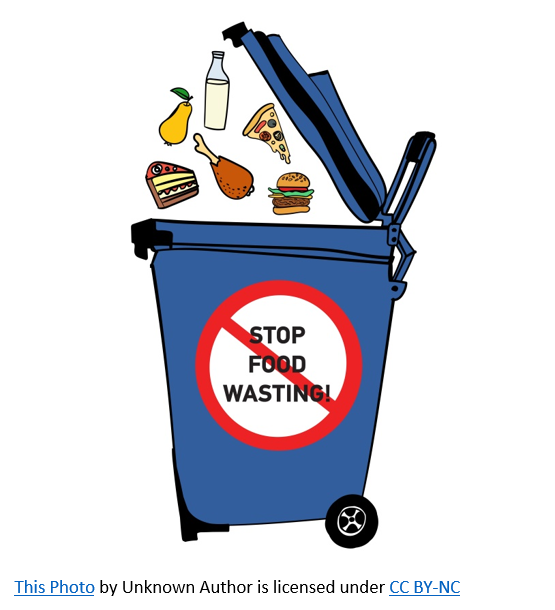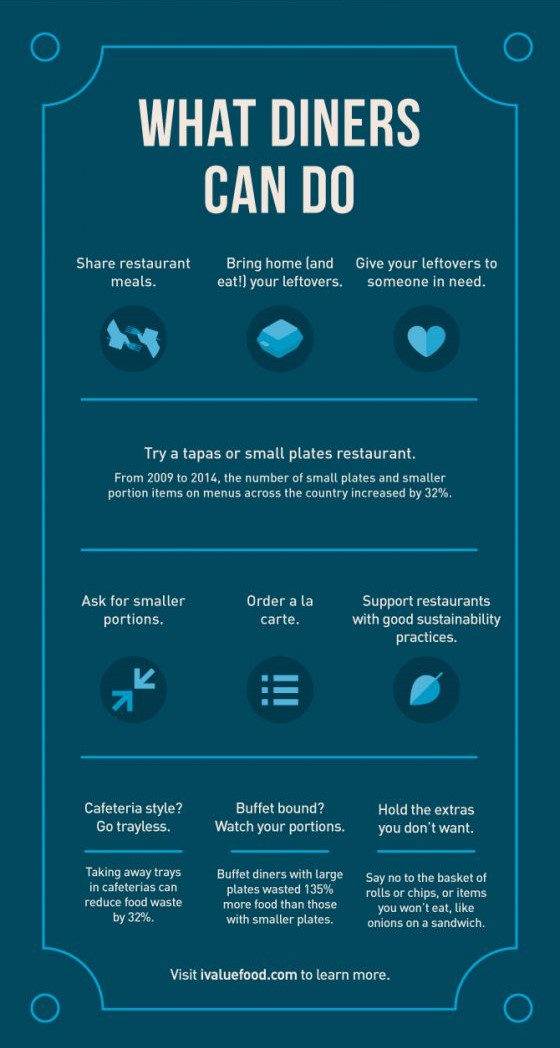 It’s shocking to learn that as much as 40% of our food is wasted in the United States each year. Waste occurs at all stages of the food system, but TxIPL is focusing on the waste we generate as consumers of food. U.S. consumers waste a quarter to a third of the grains, fruits, vegetables, and seafood produced for the U.S. Sadly, North America leads the world in food waste.
It’s shocking to learn that as much as 40% of our food is wasted in the United States each year. Waste occurs at all stages of the food system, but TxIPL is focusing on the waste we generate as consumers of food. U.S. consumers waste a quarter to a third of the grains, fruits, vegetables, and seafood produced for the U.S. Sadly, North America leads the world in food waste.

Part of the issue is the easy availability of food today. When adjusted for inflation, we spend significantly less of our income on food than in past decades, making food seem less valuable. With only about 1.5% of the U.S. population employed in the agriculture sector, few people are conscious on a daily basis of all that goes into our food. We forget the footprint of food waste includes carbon emissions, water usage, and the loss of ecosystems and biodiversity. Food waste also has economic impacts. More directly, when we throw food in the trash, we are discarding the soil, water, energy, climate, labor, an animal’s life (if meat), and all other resources that went into the food.
As people of faith, we find these facts deeply disturbing. Our religious teachings tell us we are to be good stewards of the resources entrusted to us. In this video, Bee Moorhead, TxIPL’s Executive Director, discusses the way faith influences her perspective of food waste and the relationship between food waste, climate,and social justice. This week, spend some time reflecting on how your faith might influence your perspective of food waste. Consider committing to some of the followings actions to eliminate food waste.
 Start with these Five Easy Ways to reduce food waste.
Start with these Five Easy Ways to reduce food waste.
Watch Your Trash for one week, and then modify your food habits based on the results.
I Value Food has all kinds of resources for honoring the value of all food, including so-called “ugly” produce and lonely leftovers.
Here are Tips for food planning, storage, prep, and thriftiness.
Understand what Food Date Labels really mean. It'll help you make good decisions about when it’s OK to use the food.
These 29 Ways to Reduce Food Waste looks at food habits at the store, in the home, and during mealtime.
 Learn how the freezer can be the food waste warrior’s best friend.
Learn how the freezer can be the food waste warrior’s best friend.
50% of leftover restaurant food doesn’t get taken home, and 38% of leftovers taken home are never eaten. Here are tips for Eating Out Without Wasting Food.
Taste not Waste provides guidance on using scraps of food, inedible parts of foods like corn cobs, leftovers, and sundry other things found in a kitchen.
Encourage your place of worship to participate in the Food Waste Weekend on September 21-23, 2018.
Start a Too Good to Waste campaign in your place of worship or in your community.

